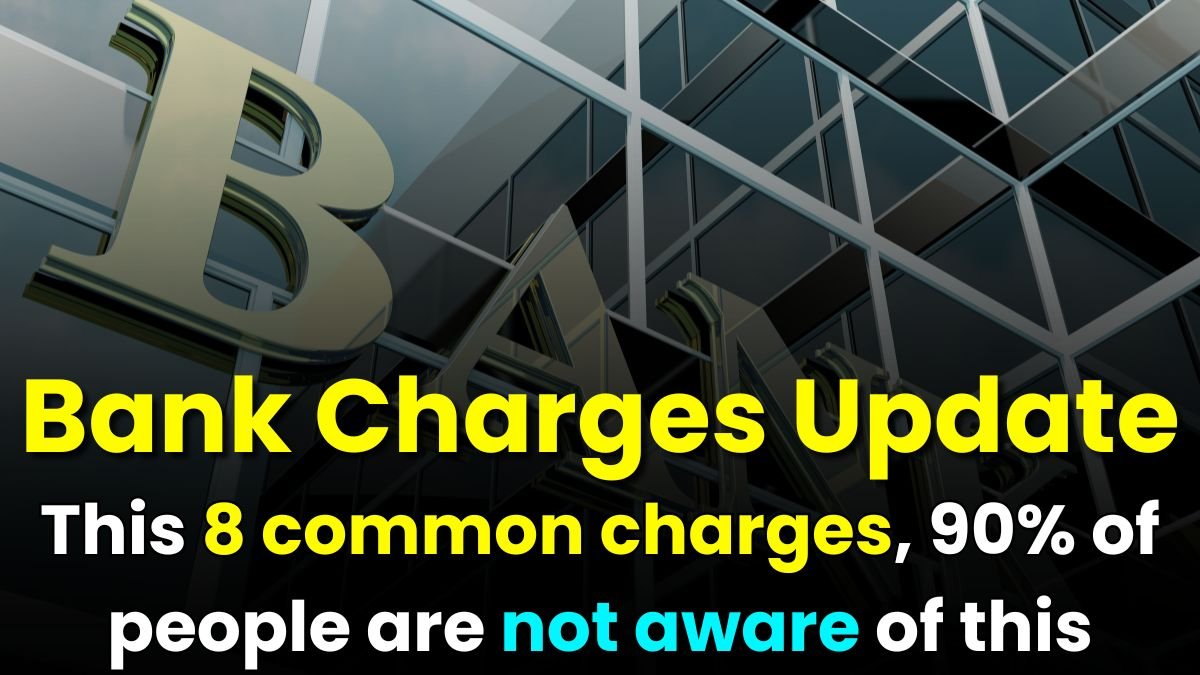While we depend on bank accounts to carry out financial transactions, many people do not seem to know the kind of charges imposed upon customers by banks. Surprisingly, 90% of people do not know about these hidden charges.
From ATM withdrawal charges to money transfer charges, amounts are deducted from banks and not many customers seem to be aware of these. If you are an account holder, then this information is most relevant to you.
Let’s look into the 8 common charges that the banks levied on their customers in 2025.
1. Cash Transaction Charges
Every bank allows a certain number of cash transactions to savings account holders free of cost. Thereafter, in case of extra transactions, charges apply. For instance, Axis Bank gives free withdrawals of up to ₹2 lakh or four transactions per month. Beyond this, a charge of 2.5% of the withdrawn amount is applicable. These limits and charges vary among banks, so check your bank.
2. ATM Withdrawal Charges
Withdrawal from ATMs is free only to a certain limit. For instance, SBI and ICICI banks provide 8 free transactions in a month in metro cities, including 5 from their ATMs and 3 from the ATMs of other banks. If the limit is exceeded, banks charge ₹20-₹50 per transaction, depending on their own set of charges.
3. Failed ATM Transaction Charges
Have you ever been a victim of failed ATM transactions because of insufficient funds? The bank still charges you. For example, SBI will charge ₹20 plus GST for every failed transaction, while HDFC Bank, ICICI Bank, Kotak Mahindra Bank, and Yes Bank charge ₹25.
4. Minimum Balance Charges
Most banks require you to keep your account active with a minimum balance. If they don’t, then there will be penalties. For example, ICICI Bank mandates that a minimum balance of ₹10,000 be maintained in metro and urban branches, and ₹5,000 in semi-urban and rural branches. A penalty of ₹100 and 5% of the shortfall will be charged for falling short of maintaining the minimum balance.
5. SMS Alert Charges
Banks do send alerts by SMS for every transaction; but did you know they charge for it? The amounts may be small, but few people see beyond this small amount. For instance, Axis Bank charges ₹5 a month, while ICICI Bank charges ₹15 quarterly. Despite being small amounts, these add up over time.
6. Debit Card Replacement Charges
So you have lost your debit card? Replacement charges will be bound to be paid. The range of this charge varies across banks ₹50 to ₹500. For example, SBI charges ₹300 plus GST, whereas HDFC Bank and Axis Bank charge ₹200 for issuing a fresh card.
7. Cheque Fees and Clearance Charges
As per the new RBI guidelines, cheque clearance charges are ₹150 for amounts above ₹1 lakh, whereas there are no charges below that limit. Furthermore, SBI only provides ten free cheques a year for savings account holders. Beyond that, a ₹40 fee will be charged for every ten cheques.
8. IMPS Fund Transfer Charges
At present, NEFT and RTGS transactions are free, but IMPS transfers still attract charges. The charges vary for IMPS fund transfers from ₹1 to ₹25, depending on the bank and the amount being transferred. For example, HDFC Bank charges ₹15 for transactions above ₹1 lakh, while SBI has no charges at all for IMPS.
Public vs. Private Banks: Who’s Costlier?
Both government as well as private banks in India charge their customers. Private banks, however, tend to offer more services but charge even higher. On the other hand, government banks may provide fewer services but impose charges that compete quite well with those of true private players. Thus, it is very crucial to compare these charges before making a choice.
Final Thoughts
Being aware of such hidden bank charges will spare you considerable expenditure. Always refer to your bank’s fee structure and prefer those services in light of your banking needs. By acting wisely, there will be no unpleasant surprises, and money management will be very easy for you.

